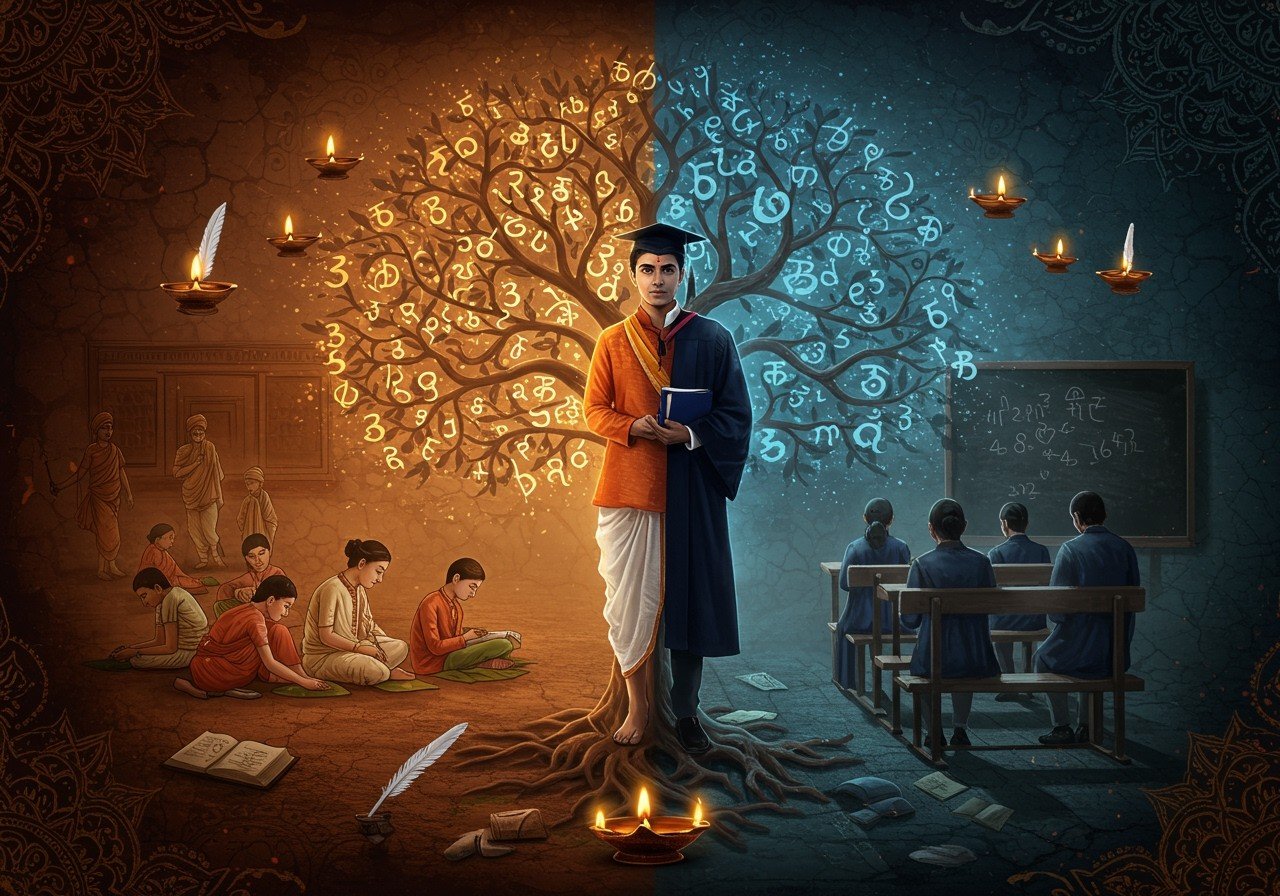The Enduring Influence of British Education in India: A Retrospective Analysis

The British education system has profoundly shaped India’s cultural and intellectual landscape. To understand this impact, we must examine the historical context preceding British rule and the subsequent introduction of English education. This seemingly straightforward act had far-reaching and unforeseen consequences that continue to resonate in India today.
Historical Context and Implementation
British Influence on Indian Education
The 18th and 19th centuries witnessed a dynamic socio-political climate in India. The Charter Act of 1813, mandating the education of Indians, marked a turning point. This act paved the way for significant transformations in the educational system. Lord Macaulay’s influential ‘Minute on Indian Education’ in 1835 solidified the position of English as the primary language of instruction, a decision with lasting implications.
This era also saw the establishment of prominent institutions like the University of Calcutta, University of Bombay, and University of Madras. These universities emerged as vital centers for higher learning. Alongside government initiatives, Christian missionaries played a significant role in expanding educational access, despite the British government’s emphasis on secular policies. This confluence of factors laid the groundwork for enduring changes in India’s educational system.
Impact on Indian Society
The British education system significantly reshaped Indian society. It gave rise to a new social class, often referred to as the ‘Brown Sahibs.’ These English-educated Indians occupied important positions in administration and governance, primarily from the upper-caste Hindus and some Muslims, altering the socio-political dynamics.
Traditional education systems, such as Gurukuls and Madrasas, experienced a decline as the emphasis shifted towards English education. This shift led to a neglect of indigenous knowledge systems. While this transition contributed to cultural alienation, it also ignited a sense of nationalism. Figures like Raja Ram Mohan Roy and Mahatma Gandhi, products of Western education, challenged British colonialism and championed the cause of freedom.
English education became a catalyst for socio-economic mobility. It offered opportunities for the modernization of Indian society and opened doors to global interactions and trade. This laid the foundation for India’s subsequent growth in sectors like IT.
Legacy of British Education
The legacy of British education is palpable in contemporary India. English continues to be a prominent language, essential for global business and communication. The structure of India’s current educational system, with its standardized curricula and examination systems, bears the imprint of the British model.
This legacy, however, is a double-edged sword. While it facilitates global integration, it also fuels debates about cultural alienation. The ongoing discussion surrounding the relevance of English-medium instruction versus vernacular education underscores India’s diverse linguistic landscape.
Critique and Contemporary Relevance
Modern India grapples with the complex legacy of British education. Balancing traditional Indian values with Western educational paradigms presents a significant challenge in an increasingly globalized world. Critics view British education as a form of cultural imperialism, yet its role in fostering global competencies cannot be denied.
Contemporary educational reforms strive to decolonize the curriculum while upholding international standards. These reforms prioritize access, equity, and quality, ensuring that India’s educational practices respect its rich cultural heritage while embracing global advancements.
A nuanced understanding of this historical context is crucial for developing future educational strategies that effectively integrate traditional wisdom with modern knowledge. The impact of the British education system continues to present both opportunities and challenges as India charts its course forward.
How Poojn.in Supports Educational Success Through Traditional Items
At Poojn.in, we offer a selection of sacred items that enable students and educators to honor India’s rich educational heritage while striving for academic excellence. Our curated collection includes:
- Saraswati Puja Items: Complete puja sets for worshipping the goddess of knowledge and learning. These sets contain all the essential items required to perform the puja according to tradition.
- Brass Study Table Items: Traditional lamps and accessories to create a conducive study environment. These items bring a touch of tradition and positive energy to your study space.
- Pure Copper Water Bottles: Store water in the traditional Ayurvedic way, believed to enhance focus and memory. Copper is known for its health benefits and its ability to purify water.
- Meditation Accessories: Incense sticks, holders, and meditation mats to promote concentration. These help create a calming atmosphere for meditation and study.
- Educational Success Puja Kits: Specially designed sets for students preparing for exams. These kits include items specifically chosen to invoke blessings for success in studies.
We deliver these authentic items across India, making it easy for families to uphold traditional practices that support education. Our products include detailed instructions in multiple languages and undergo rigorous quality checks.
Shop Educational Items at Poojn.in
Note: Prices and availability may vary. Please check our website for current details.
You can also discover other interesting rituals that support success on our website.
- Saraswati Puja and Basant Panchami Wishes, Guide, and Best Messages
- DIY Saraswati Puja at Home: A Step-by-Step Guide for Beginners
Conclusion
The story of British education in India is a complex and influential one, shaping the nation in profound ways. It fostered a new social class and broadened horizons, while also challenging traditional knowledge systems and prompting debates that persist to this day. English remains a crucial link to the global community, yet the search for equilibrium between international integration and cultural preservation continues. As India moves forward, understanding this legacy is instrumental in crafting educational approaches that both honor the past and embrace the future. The ongoing evolution of education in India stands as a testament to resilience and adaptation.
FAQs on British Education in India: Impact and Legacy – A Critical Analysis
What were the primary characteristics of British education in India? British education in India centered around English language instruction, Western sciences, and humanities. Its primary aim was to cultivate a class of educated Indians capable of assisting in administration. It also sought to instill Western cultural values and principles. This approach aimed to create a cadre of individuals who could effectively bridge the gap between British rulers and the Indian populace.
Why did the British introduce English education in India? The British introduced English education to create a workforce capable of supporting their governance. It also served as a means of disseminating Western culture and ideas. This served the dual purpose of strengthening British control and influencing Indian society.
How did British education affect Indian society? British education led to a rise in literacy and the emergence of a new class of educated Indians. This also triggered social reforms and inspired movements for independence. The introduction of new ideas and perspectives contributed to a growing sense of national identity and a desire for self-governance.
What is the legacy of the British educational system in India? The legacy includes the establishment of universities, the dissemination of Western knowledge, and the promotion of English as a medium of instruction. These elements continue to shape India’s educational landscape today.
Did British education in India encounter any criticism? Yes, British education was criticized for marginalizing Indian culture and languages. It was often perceived as a tool for British control rather than a genuine effort to provide quality education for all Indians.
How did British education influence Indian independence? The educated class, shaped by British education, played a pivotal role in the independence movement. They leveraged their knowledge to advocate for self-rule, drawing inspiration from Western ideals of liberty and democracy.
Does the British education system still persist in India today? Numerous aspects of the British education system, such as English-medium schools and examination systems, remain prevalent in India today. They continue to influence the structure and content of education.
What changes did Indian education undergo after independence? Post-independence, India prioritized the integration of indigenous languages and culture into the curriculum while retaining some elements of the British educational structure. This reflects an effort to reclaim cultural identity while benefiting from aspects of the inherited system.


